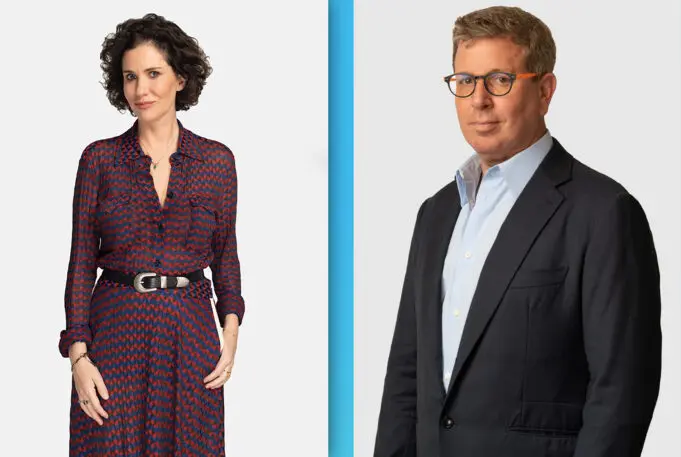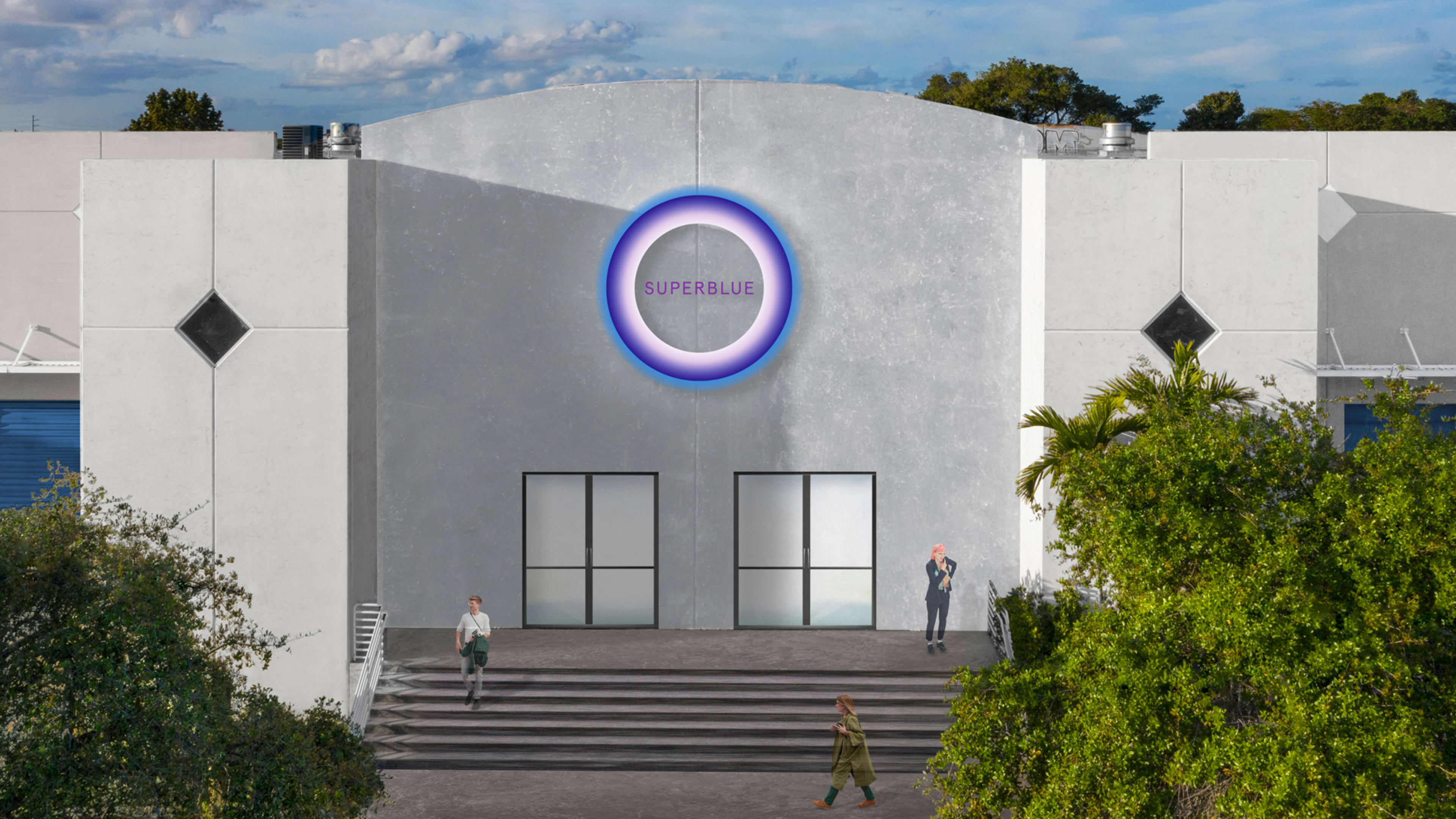Superblue, the experiential art center created by Pace Gallery executives, plans to open its first location in Miami in early spring, after COVID-19 derailed plans for a 2020 opening. (Emerson Collective, Laurene Powell Jobs’s social change and investing arm, is a founding partner.) Superblue, which plans to open several locations, will commission installations from experimental artists such as Nick Cave, James Turrell, Es Devlin and teamLab. The twist? Instead of selling the art to wealthy patrons, Superblue will sell tickets, starting at $30, to the public. Fast Company’s Stephanie Mehta spoke with cofounders Marc Glimcher, who also is president and CEO of Pace Gallery, and Mollie Dent-Brocklehurst, Superblue’s CEO, about the business model behind the concept, and why social-distancing restrictions might actually work in its favor.
Fast Company: Why do you think the art world is shifting away from viewing works to experiencing them?
Marc Glimcher: Artists started thinking about experience long before they thought about art as a commodity. The history of art is the history and the invention of the experiential economy, whether it’s the Sistine Chapel or the Lascaux caves, one of the earliest acts of humanity was to create, recreate, and alter that environment. Somewhere in the 16th century people started thinking about art as something you could pick up, sell, hang on your wall, and sell again. And that . . . really took off in the 19th century, and it gave rise to an avant-garde. And the avant-garde gave rise to a lot of questions that undermine entrenched hierarchies. And the questions we’re addressing today are, “what if artists are capable of creating an experience, and how does that experience go out into the world?”
Mollie Dent-Brocklehurst: Artists . . . are making work for a much wider audience, knowing that it’s going to have this very profound impact on an enormous number of people. And artists like Robert Irwin and James Turrell and JR are thinking about how they can use this kind of environment to influence the way people see things and to influence positive change.
FC: How did you come up with the idea for Superblue?
MG: Mollie was running Pace London and she had started The Garage [Centre for Contemporary Culture in Moscow], which had tendencies towards [experiential art] a long time ago. And, this was something like seven years ago, here in New York we [at Pace] started looking at what a show can be. We and the artists started talking about the possibility of selling tickets rather than selling art. And that is when Mollie and I started to think that we didn’t need a white box, we needed a black box.
We tried it out in Palo Alto, where we have a gallery. I had been going to Silicon Valley for about 15 years, and it undoubtedly has had an influence on me. And I got to know people like Laurene Powell Jobs and Laura Arrillaga [Andreessen], who said, “my father’s got this whole row of old car dealerships that he owned in Menlo Park, why don’t you use the old Tesla showroom?” By the way, that’s the only place in the world where there is an old Tesla showroom, right? And we literally did paint the inside of it black, and we launched this teamLab show where we sold tickets instead of art. And 250,000 people came.
FC: What were the lessons from that first show?
MG: We learned that the museums are incredibly interested and supportive. We learned that the art world was not. Everyone in the art world thought the art dealers were going to be the disruptors. We said for years, if there’s a disruption coming, it’s coming from the artists, which seemed pretty clear to us when we were standing there with lines around the block in Menlo Park. And then Mollie took it to the gallery in London.
MDB: We had 80,000 people signed up for 13,000 times slots within about three days. We learned that there’s a real art to the operations of this kind of a business. In order to make the finances work you need to run it for a significant amount of time, really a minimum of a year. We’ve started to understand . . . the amount of people who can get through the space, the access, the bottlenecks. . . . It’s a knowledge set that we didn’t have in the gallery world.
FC: So what is the business model?
MDB: There’s not a one-size-fits-all, [and] the general concept, to be negotiated person-by-person, is that we would start the process of commissioning work, depending on the location, that is of a certain size, a certain concept. We would pay for the commissioning of the art and we would generally pay an artist’s fee. We initially would look at deploying that work in a space that we own, but potentially not, and we would give the artist a royalty or percentage . . . of ticket sales. The work would start in one location and then it could travel to future Superblue centers around the world or to museums or to other private owners that we’re engaged with.
MG: It’s a little bit of a hybrid between the art world and maybe Broadway and moviemaking in that we are functioning as the producers. This is the problem Charlie Chaplin ran into, right? He needed to pull the talent together, he needed the money to make the movies, but he also needed to build the movie theaters. And that was how United Artists got started. And, we found ourselves in the same place. There’s no infrastructure. So our business model has three sides to it. One is to create the art, then we need the ability to move that artwork, and so you want to create Superblue centers all around the world. And then, our third business line is we believe we are creating an important brand. We’re starting as a meeting place in the real world, but we are creating an incredible opportunity to connect to these artists and the art.
FC: Admission to Superblue will not be cheap. Are you thinking about ways to make the exhibits more accessible to the communities in which you operate?
MDB: We’re partnered with Emerson Collective, and it’s so important to them. It’s important to us, and it’s important to our artists. We haven’t quite got to the point where we’ve announced our plans, but we’re getting there. It is a daily conversation for us.
FC: I’d be remiss if I didn’t ask about how the pandemic impacted your plans and how you used the time.
MG: Obviously, if you’re in the mass-attraction business, it was a serious freak-out at first. It taught us to accelerate our ideas for the virtual, digital Superblue, which was a little back burnered and went right to the front burner. But we found something amazing, which is that our artists are creating experiences where you’re not sitting in a chair four inches from somebody. Our artists are creating experiences. James Turrell has rules, you know? Ten people can be in a Ganzfeld space. That’s it. And we found a lot of interest from people saying, maybe this big, open, walk-around experience is going to be aligned with the post-COVID world.
FC: Do you think other galleries will attempt their own version of Superblue?
MG: You know the art business is going great. It always surprises everybody how strong the art business is, how resilient it is. We’re in a world where pictures are everything, and all the stars are aligned for the art world. People in the traditional art business feel that it just can never stop, and no innovation is necessary. Or the innovation that they do is pointed towards kind of asset management, treating art more and more like an asset. And of course the value of art and everything comes from the magic side.
FC: What are the new possibilities that Superblue will open up for artists? Will this infrastructure give way to new art forms?
MDB: We’re allowing the artists who, who have the ability or the desire to create it, create these kinds of experiences to do it on a big scale, without the need to kind of sell small-scale souvenirs in order to fund the big-scale experience. They can think big. We’re looking at prototypes, we’re looking at written scripts that we can develop into a much bigger concept, and there are other artists out there who we’d love to work with. We started with our small group of artists, and we’ve already expanded, and we haven’t launched our first center yet. So the idea of bringing on young artists seems like the next thing, and it’s something that we think about within our programming and through mentorship.
MG: We think this is bigger than Superblue. This is the start of the next great experimentation [among] great artists who have done amazing things in the past and want to experiment in a new platform and the young artists who are just getting started.

Recognize your brand’s excellence by applying to this year’s Brands That Matter Awards before the early-rate deadline, May 3.
